In the harmless treatment and resource recovery process of domestic waste, screening equipment is a key step in achieving "precise waste sorting." Using physical principles, it separates mixed waste based on properties such as particle size, density, and shape, laying the foundation for subsequent processes such as incineration, landfilling, and material recovery. The five most widely used types of equipment are Trommel screens, wind sifters, disc screens, vibrating screens, and Ballistic Screen. Each has its own unique operating principle, functional positioning, and application scenarios. A detailed analysis is provided below:
Trommel Screen: Basic Equipment for "Rotary Coarse Sorting"
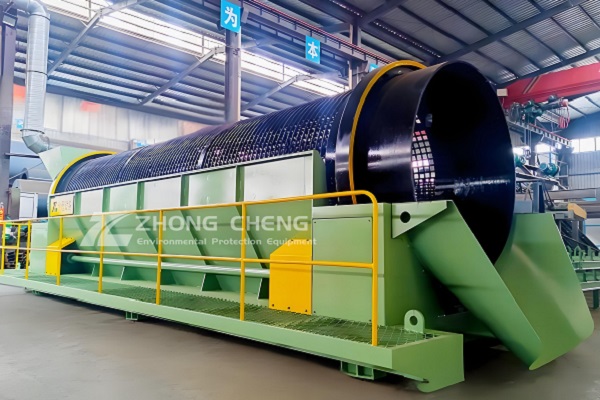
Core Function
As the "first stage" in waste pretreatment, Trommel screens are primarily used for coarse screening of mixed waste, separating it into "oversize" (large-sized waste, such as large furniture and waste cardboard boxes) and "undersize" (smaller waste, such as kitchen scraps and small stones) based on particle size. Furthermore, a multi-segment screen allows for three-level sorting (coarse, medium, and fine), reducing the processing load on subsequent equipment.
Core Features
1. Strong Adaptability and Non-Clogging: The Trommel screen features a cylindrical or conical mesh that rotates slowly (typically 5-15 rpm) driven by a motor. This rotation causes the waste to tumble and move continuously within the Trommel, eliminating the clogging problem that can occur with fixed screens due to entanglement (e.g., plastic bags, vines). This system is particularly suitable for processing raw waste with high moisture content and complex composition.
2. Stable Screening Efficiency and Flexible Adjustment: Screening efficiency can be optimized by adjusting the Trommel speed (to control waste retention time), the mesh aperture (to match the target particle size), and the Trommel mounting angle (to control waste movement speed). For example, when processing waste with a high proportion of food waste, the angle and speed can be reduced to ensure that small food waste particles fall fully through the screen.
3. Significant Limitations: This system has poor separation efficiency for waste with similar density and particle size (e.g., small plastic pieces and small stones). Furthermore, the equipment is bulky, requires a large footprint, and consumes more energy than smaller screening equipment. It is typically used in the "front-end coarse separation" stage of waste treatment plants.
Wind sifter: Lightweight Material Recovery Equipment for "Density-Based Separation"
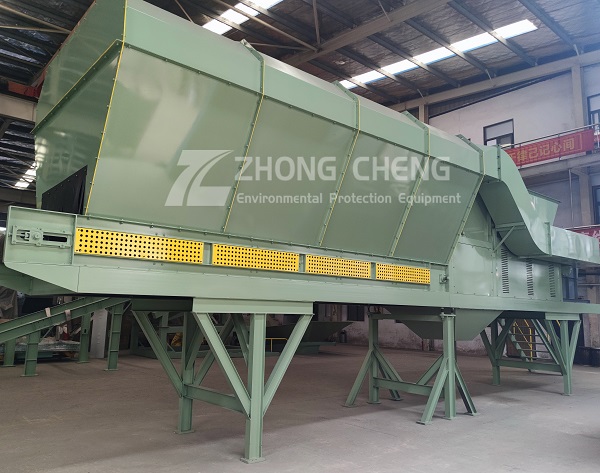
Core Function
A wind separator utilizes aerodynamic principles to separate waste particles based on density differences. Its core function is to extract "lightweight combustibles" (such as plastic film, waste paper, and foam) from mixed waste while removing "heavy, inert materials" (such as metal, glass, and stone). This serves waste incineration (increasing the calorific value) or plastic recycling (purifying lightweight materials).
Core Features
1. Unique Separation Dimension and Highly Targeted: Unlike other devices that separate by "particle size," the wind sifter focuses on "density differences," effectively separating materials with similar particle sizes but different densities. For example, plastic with a density of 0.9 g/cm³ will be lifted by airflow, while stone with a density of 2.5 g/cm³ will fall due to gravity. This characteristic makes it a core device for "lightweight material recovery." 2. Simple structure and low cost: It primarily consists of a fan, air separation channel, a light-weight collection bin, and a heavy-weight collection bin. It lacks complex moving parts (such as rotating discs or vibrating motors), resulting in low maintenance costs and minimal failure rates, making it suitable for large-scale continuous operation (processing capacity can reach 100-500 tons/day).
3. Highly susceptible to environmental influences: Separation efficiency depends on airflow stability. If the waste moisture content is too high (e.g., food waste clinging to light-weight materials), the light-weight materials will become heavier and unable to be lifted. Improper air speed control (too high to easily lift heavy materials, too low to separate light materials) will reduce separation accuracy. Therefore, it is often necessary to use it in conjunction with a pre-drying system or an adaptive air speed control system.
Disc Screen: A Medium-Fine Screening Equipment with "Precise Classification"
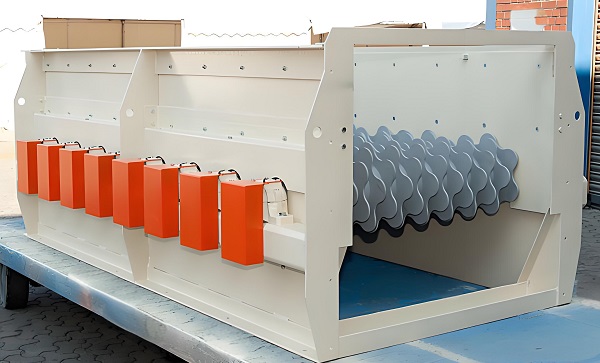
Core Function
The disc screen is a highly efficient medium-fine screening equipment. It uses two sets of counter-rotating discs to form a screening channel with variable clearance, precisely separating waste by particle size (typically 5-40mm). It is particularly suitable for separating food waste from other waste—for example, sending fine food waste (<10mm) that falls through the screen to an anaerobic digestion system, while sending plastic and paper that falls through the screen to incineration or recycling.
Core Features
1. High Screening Precision and Flexible Classification: The discs are made of wear-resistant rubber or metal with a ridged surface. Their rotation not only transports waste forward, but also precisely controls the particle size of the material passing through the screen through the gap between the discs (adjustable from 0.5 to 50mm). The classification error can be controlled within ±1mm, far exceeding the ±5mm of a Trommel screen. 2. Strong anti-entanglement and anti-clogging capabilities: When the two sets of discs rotate in opposite directions, they create a "tearing and pushing" effect on long pieces of trash (such as plastic bags and tree branches) that are entangled in the discs, preventing them from blocking the passage. Simultaneously, the discs' rotational motion removes adhered wet trash (such as kitchen waste) from the surface, making it suitable for processing high-moisture waste with a moisture content of 60%-80%.
3. Sensitive to large, hard objects: Large pieces of metal or brick (>50mm) mixed with the trash can easily become lodged in the disc gaps, causing the equipment to shut down. Therefore, a front-end iron remover and large-piece waste crusher are required to prevent hard objects from damaging the discs and affecting operational stability.
Vibrating Screen: A "High-Frequency, High-Efficiency" Universal Screening Equipment
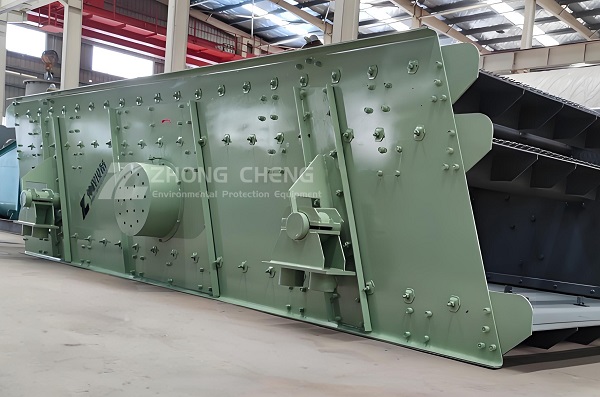
Core Function
Vibrating screens utilize high-frequency vibrations (50-3000 vibrations/min) to project waste across the screen, achieving particle size separation based on the screen aperture. They are a universal device for industrial screening and are primarily used for back-end fine separation in waste treatment, such as sorting fine particles (<2mm) from incineration fly ash and removing impurities from recycled plastics after crushing.
Core Features
1. High Screening Efficiency and Fast Processing Speed: High-frequency vibrations rapidly separate waste particles on the screen—fine particles quickly pass through the screen, while coarse particles quickly move toward the outlet. The processing capacity per unit area can reach 10-50 tons/(h·m2), two to three times that of a Trommel screen, making it suitable for high-volume, fast-paced processing scenarios. 2. Compact structure and wide application: Vibrating screens are small, occupying only one-third the floor space of a Trommel screen, and can be flexibly integrated into the "intermediate link" of a waste processing line. They also offer a variety of screen types (woven, perforated, and polyurethane), with varying apertures and materials to suit separation requirements (for example, polyurethane is wear-resistant and suitable for processing hard waste).
3. High vibration noise, easily affected by material characteristics: High-frequency vibrations can generate noise levels of 85-100dB, requiring sound insulation. If the waste is highly cohesive (such as wet food waste), fine particles can easily adhere to the screen, causing clogging. Regular cleaning or the installation of an ultrasonic cleaning system is necessary. Furthermore, vibrations can cause faster wear of equipment components (such as springs and motors), requiring more frequent maintenance than other equipment.
Ballistic Screen: A Differentiated Device for "Separation by Elasticity"
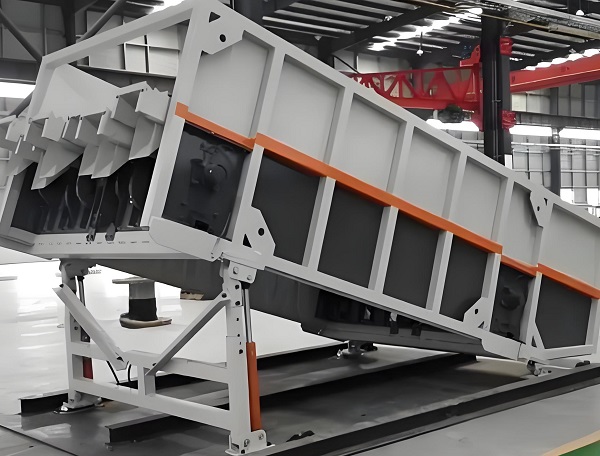
Core Function
The Ballistic Screen separates waste particles based on their "elasticity differences" and "friction coefficient differences." When waste lands on an inclined "bouncing board," materials with high elasticity and low friction coefficients (such as plastics and metals) bounce upward along the board's slope into the "bouncing material collection bin." Materials with low elasticity and high friction coefficients (such as food waste and sludge) adhere to the board and slide down the slope into the "non-bouncing material collection bin." Its core function is to rapidly separate food waste from plastic.
Core Features
1.Unique Separation Logic and Strong Complementarity: Unlike "particle size separation" or "density separation," the Ballistic Screen focuses on "elasticity differences," separating materials with similar particle sizes and densities but different elasticities. For example, for particles of 10-20 mm, plastic particles with high elasticity will bounce and separate, while food waste particles with low elasticity will slide downward. This characteristic makes it a complementary device to wind sifters and disc screens, further improving the purity of recycled plastics.
2. No complex power requirements, low energy consumption: The core component of the Ballistic Screen is an inclined bouncing plate (typically tilted at 30°-45°). Separation is achieved simply by conveying the waste to the bouncing plate via a conveyor belt. High-power components like fans and vibrating motors are unnecessary, resulting in energy consumption of only 1/5 that of an wind sifter and 1/3 that of a vibrating screen.
3. Sensitive to material conditions: Excessive moisture content in the waste (e.g., food waste adhering to plastic) can reduce its elasticity and prevent it from bouncing. Long, thin objects (such as ropes or plastic bags) mixed in the waste can become entangled on the edges of the bouncing plate, hindering separation. Therefore, it is necessary to control the waste moisture content (<60%) at the front end and remove long impurities.
Garbage screening equipment needs to be "used in combination" according to factors such as garbage composition (such as the proportion of kitchen waste, the content of light materials), processing goals (such as recycling plastics, purifying kitchen waste), and production capacity requirements. For example, garbage treatment plants often use the process of "Trommel screen (coarse classification) → bounce screen (elastic separation) → wind sifter (light material purification) → disc screen (fine classification)" to achieve efficient separation and resource utilization of garbage.
Save Time! Get A Detailed Quotation Quickly.
